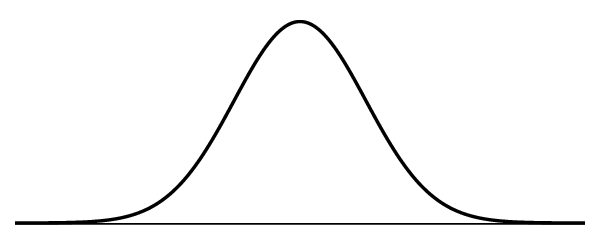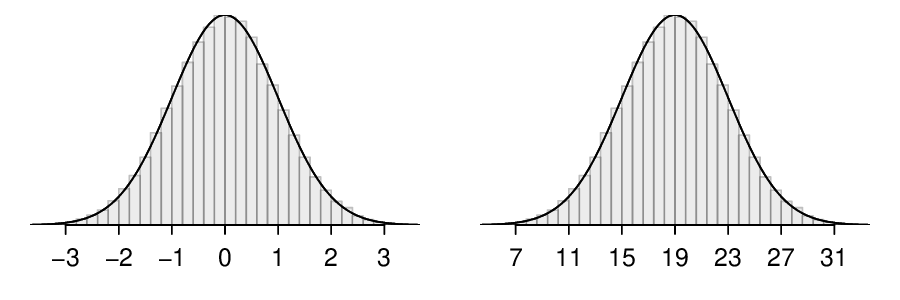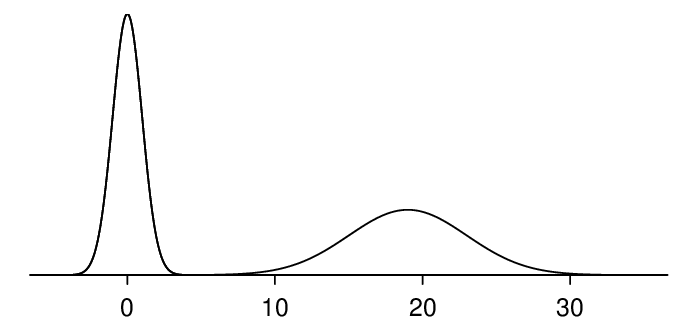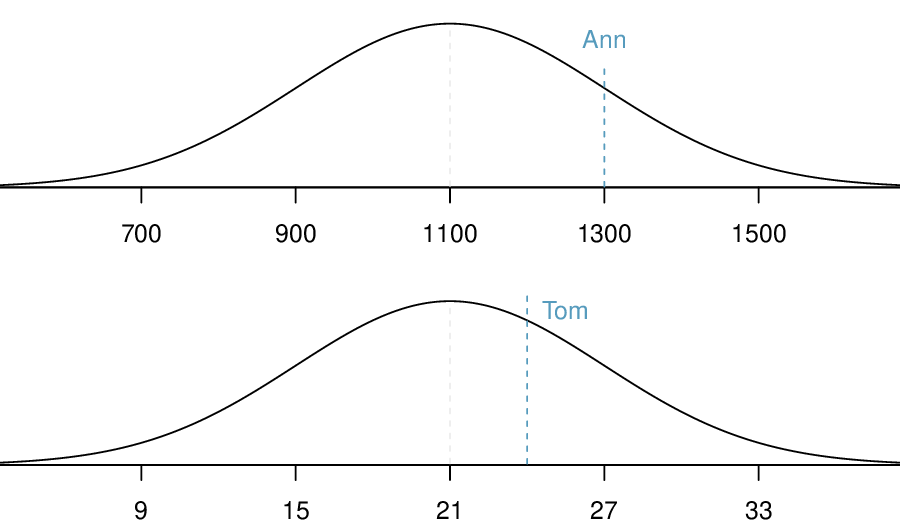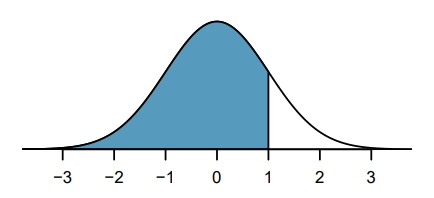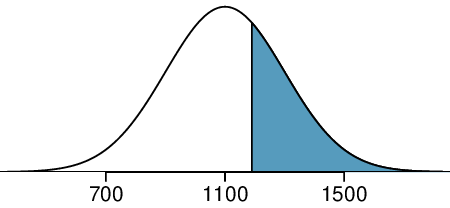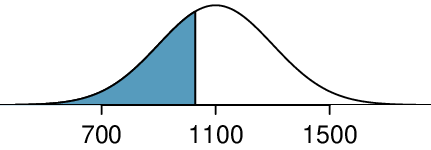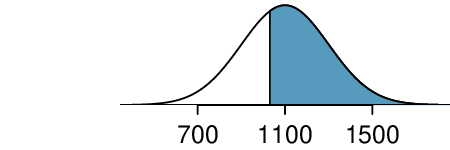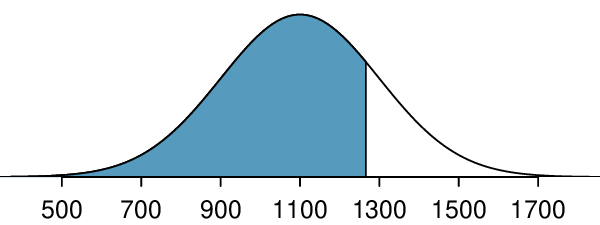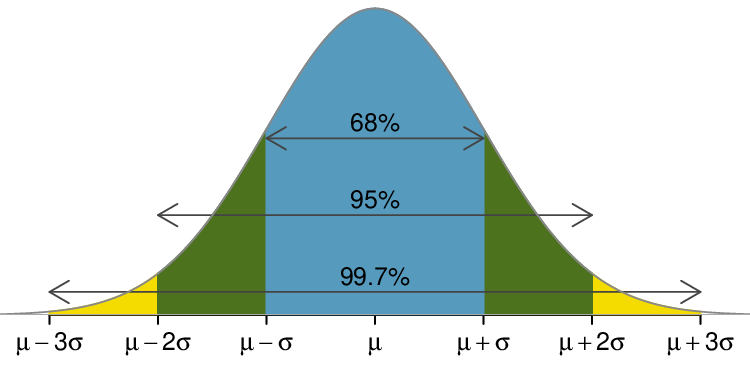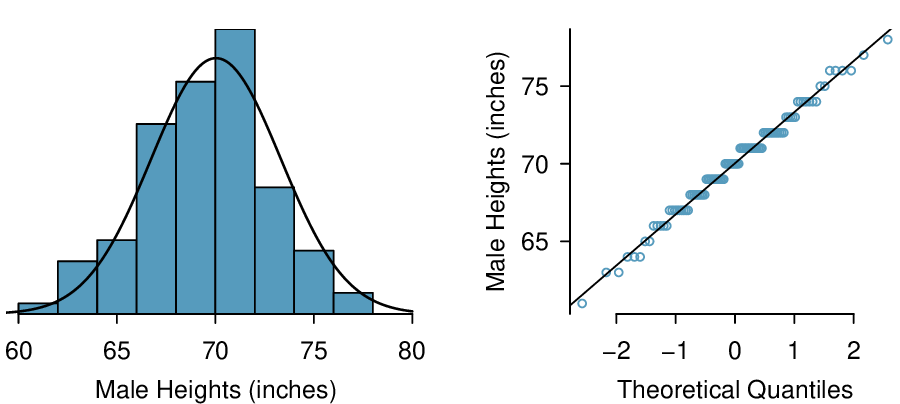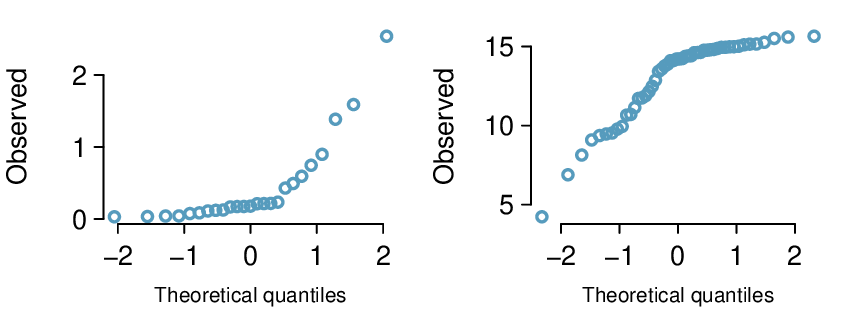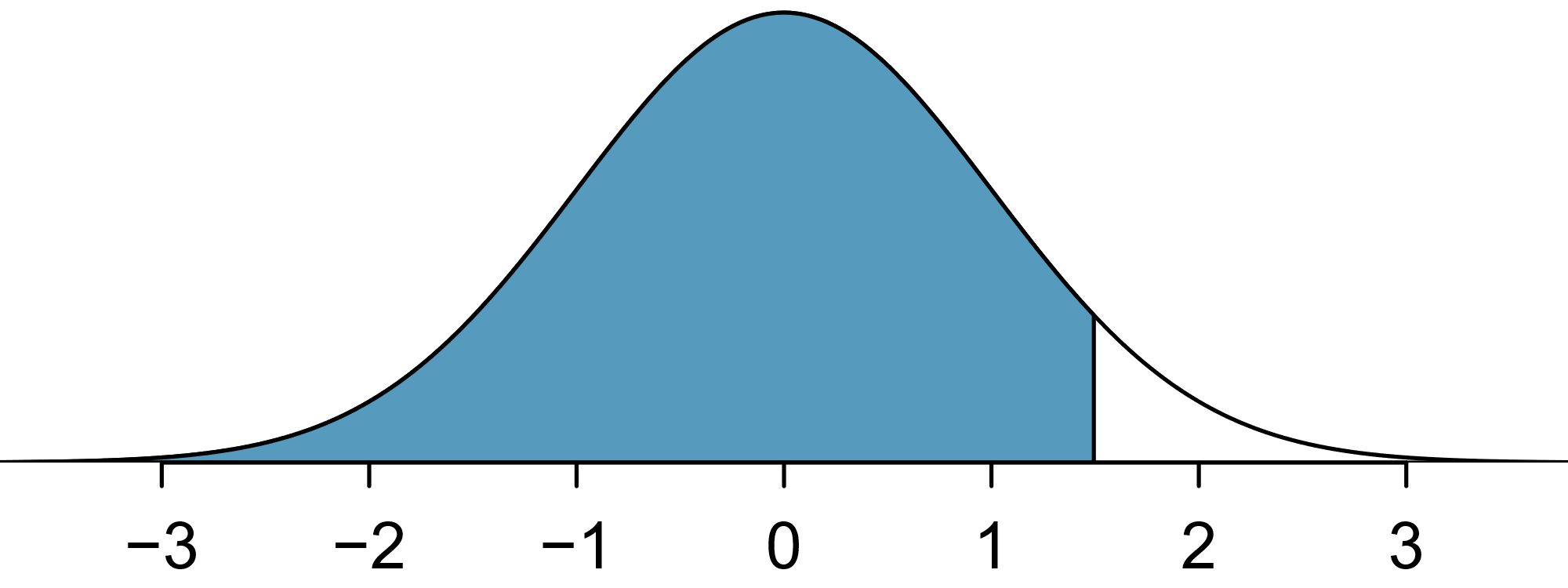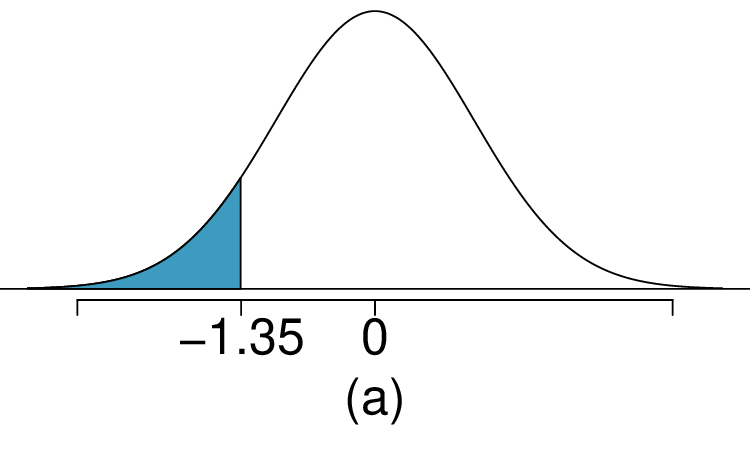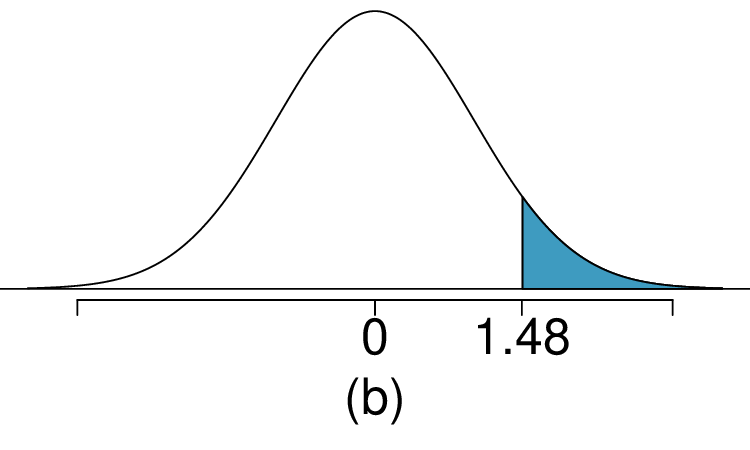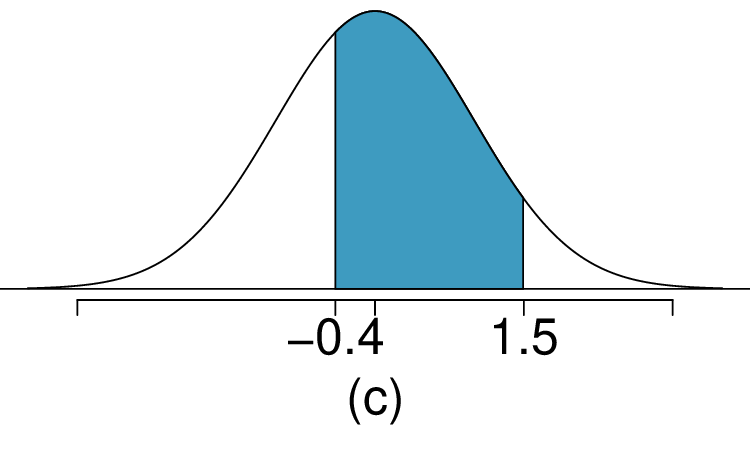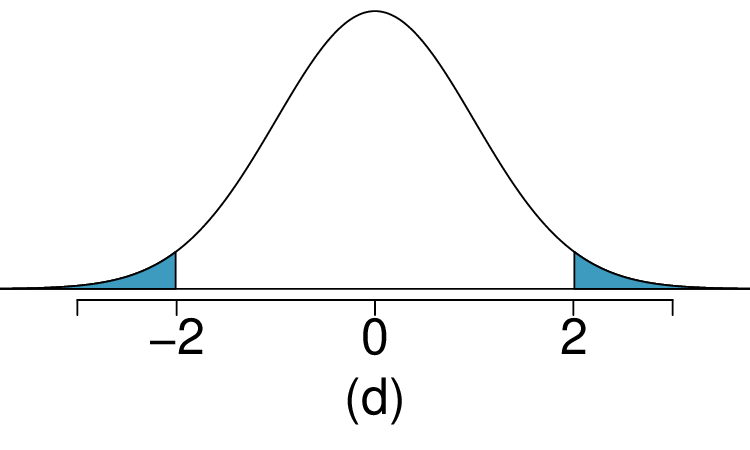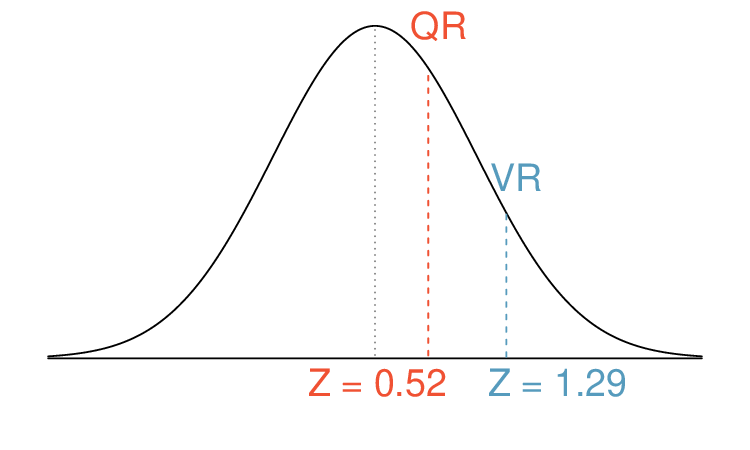As we saw in
Subsection 2.2.3, we can use Z-scores to compare observations from diferent distributions. Using Ann’s SAT score, 1300, along with the SAT mean and SD, we can find Ann’s Z-scores.
\(Z_{\text{Ann}} = \frac{x_{\text{Ann}}-\mu_{\text{SAT}}}{\sigma_{\text{SAT}}} = \frac{1300-1100}{200} = 1\)
Similarly, using Tom’s ACT score, 24, along with the ACT mean and SD we can find his Z-scores.
\(Z_{\text{Tom}} = \frac{x_{\text{Tom}}-\mu_{\text{ACT}}}{\sigma_{\text{ACT}}} = \frac{24-21}{6} = 0.5\)
Because Ann’s score was 1 standard deviation above the mean, while Tom’s score was 0.5 standard deviations above the mean, we can say that Ann did better than Tom.
